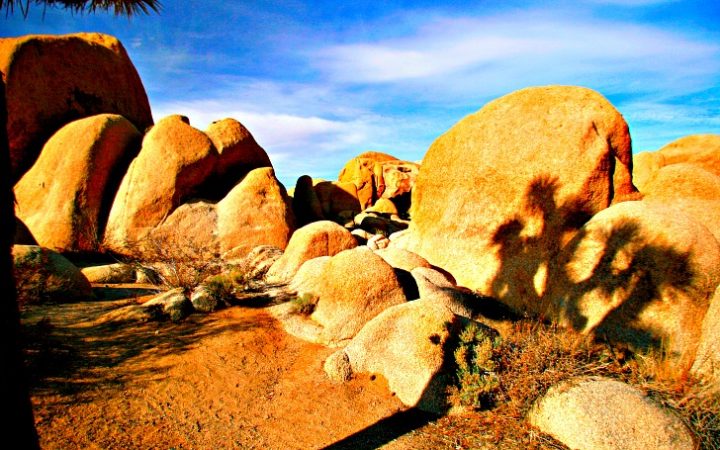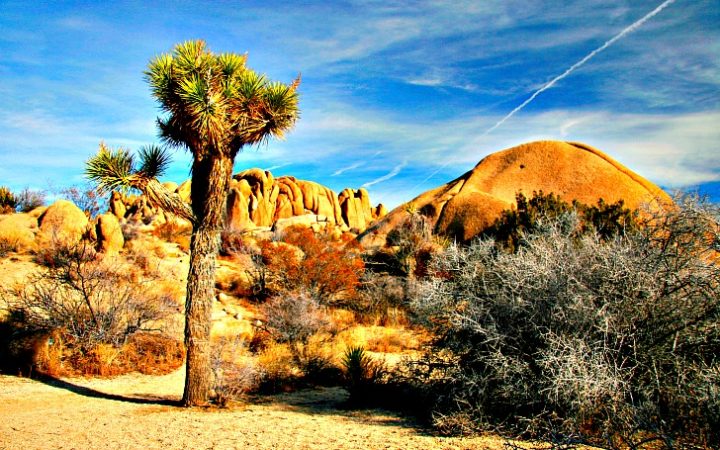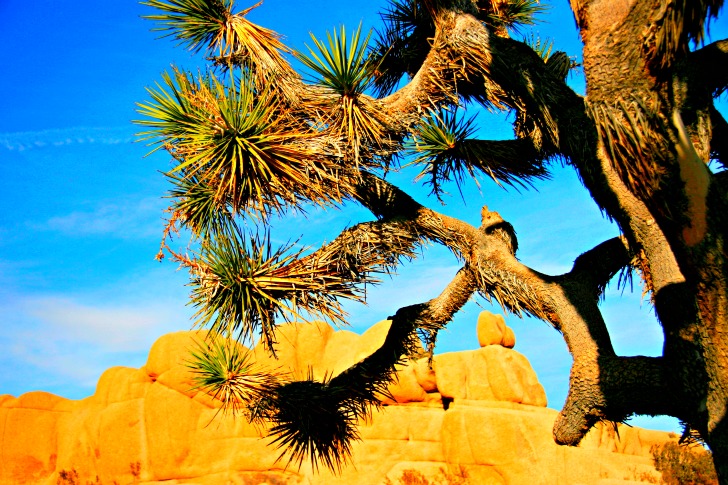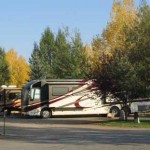The fascinating geologic landscape of Joshua Tree has long fascinated visitors to this desert region. Smooth granite monoliths and rugged canyons testify to the forces that shaped this land.

Late afternoon shadows enhance the beauty of Joshua Tree. © Rex Vogel, all rights reserved
Joshua Tree National Park is an amazingly diverse area of rugged terrain where two major deserts come together. The park demonstrates the vivid contrast between the higher Mojave and lower Sonoran deserts that range in elevation from 900 feet to 5,185 feet at Keys View. This outstanding scenic point overlooks a breathtaking expanse of valley, mountain, and desert.
The park’s main attractions include forests of giant branching Joshua trees, granitic monoliths, rugged mountains, palm oases and desert gardens of cholla and ocotillo. Scenic paved roads lead to viewpoints and trailheads. Roadside interpretive exhibits offer pull-outs and parking areas. These stops offer insights into the region’s complex desert ecosystem, wildlife and human history.
Entering the park at the south entrance off I-10, Cottonwood Visitor Center offers maps and a park newspaper listing a number of ranger-led activities and hiking trails.

Related to the yucca bush, the Joshua tree was named by Mormon pioneers heading west. © Rex Vogel, all rights reserved
Half a mile down the road, the Cottonwood Springs Oasis is filled with thick California fan palms and large cottonwoods, all planted in the early 1900s by miners and pioneers who used this spring as their source of water. Grinding holes in nearby rocks tell the story of an even more ancient use of the oasis by Native Americans centuries ago. Cottonwood Spring is noted for its bird life.
Continuing north along Pinto Basin Road, you’ll pass Smoke Tree Wash and Porcupine Wash through Fried Liver Wash and Ocotillo Patch.
A few miles beyond, the Cholla Cactus Garden provides an opportunity to stretch your legs along the ¼-mile loop nature walk. Use caution, as this cactus is referred to as “jumping cholla” for good reason.
As you continue north, the look of the desert changes with the increase in elevation. A roadside exhibit describes the merging of the Sonoran Desert with the Mojave Desert ahead. The road twists through enormous piles of monstrous boulders. Soon you’re among the Joshua trees, whimsical-looking plants with arms twisted in all directions.
Related to the yucca, the Joshua tree was named by Mormon pioneers heading west. The strange, contorted branches reminded them of the Biblical figure Joshua, pointing westward to the “promised land.”
The hiking in this park is fantastic. A variety of self-guided nature trails and longer hikes offer different perspectives of the park. The aptly named Jumbo Rocks has a half-mile nature walk to Skull Rock.


